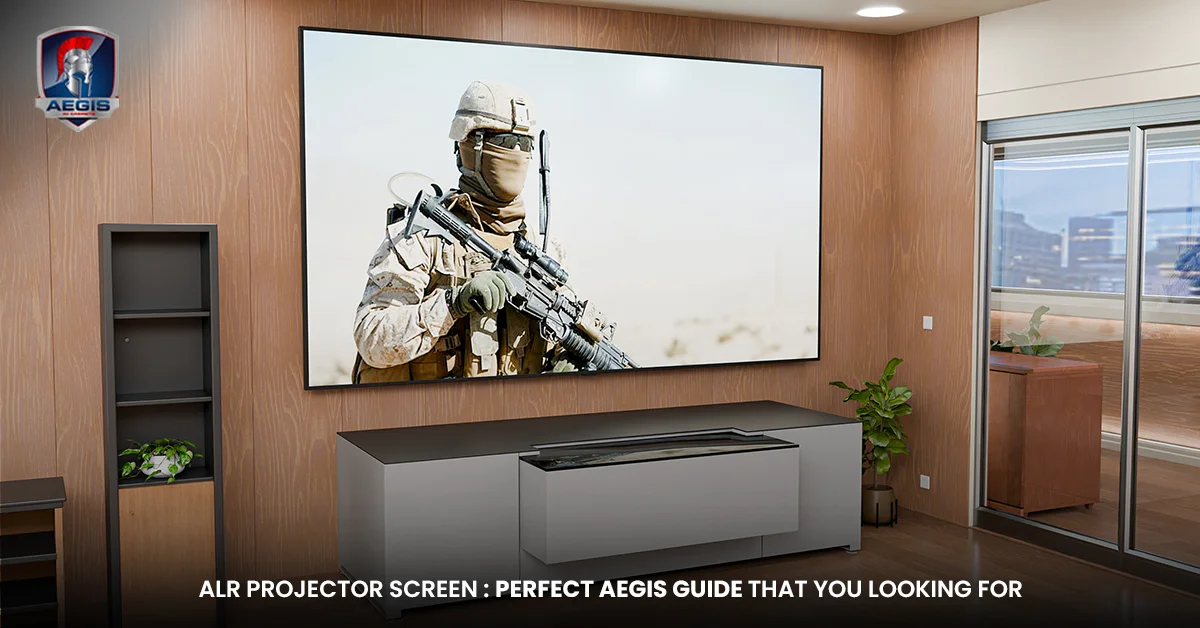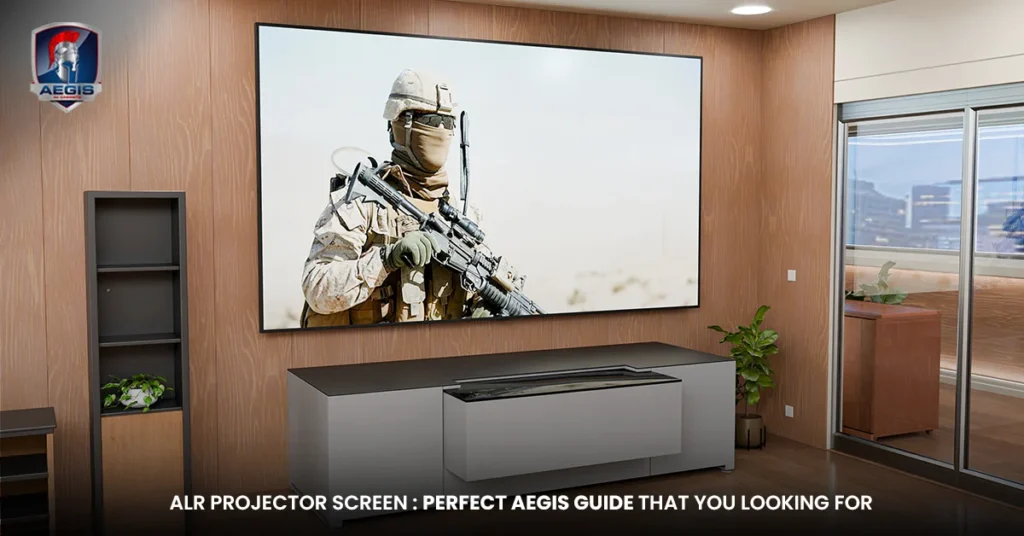

Usually, ALR projector screens work well in bright rooms. Regular screens reflect light in all directions. ALR screens reflect only the projector’s light back to you. They block other light, resulting in a brighter and clearer picture. This makes them perfect for spaces with lots оf ambient light.
This blog explores everything about ALR projector screens. It provides all the information you need to make a smart choice. We’ll explain how ALR technology works and its benefits. We’ll also look at different types оf ALR screens. Finally, we’ll cover what tо consider before buying your ideal screen.
What is It? and What does the ALR projector screen meaning?
ALR stands for Ambient Light Rejecting. This projector screen is designed for bright environments. It reflects projector light directly at you and absorbs ambient light from the room, making images sharper and brighter, even with lights on. ALR screens are great for home theaters, presentations, оr living rooms with many windows. However, It can be more expensive and have different viewing angles compared to traditional screens.
How ALR Screens Work
ALR screens use multiple layers and microstructures to direct light where it’s needed. They also reflect light from the projector back towards the viewers. Ambient light hitting the screen at odd angles is deflected away, reducing unwanted glare.
Types of ALR Projector Screens
There are several types оf ALR projector screens, each with unique features:
Angular-Reflective ALR Screens: These screens reflect the projector’s image at the opposite angle оf incidence. This ensures the image is directed toward the viewers.
Retro-Reflective ALR Screens: These screens reflect light back towards the projector, offering higher image quality. They require precise installation for the best results.
Ceiling Light Rejection ALR Screens: Designed to block light from ceiling fixtures, these screens are ideal for rooms with overhead lighting.
ALR Screens for Ultra-Short-Throw Projectors: These screens are made for ultra-short-throw projectors. They reflect light at an extreme angle and may not work well with other projector types.
Benefits of Having ALR Screens
These good things will happen if you have ALR Screens. Whether you don’t have one yet, grab our Artemis Wide оr Middle now; it’s essential for your home theater. These screens are better than standard projector screens in several ways:
Improved Image Quality
ALR screens reduce the impact оf ambient lighting. This means you get a brighter and crisper picture with less glare.
Enhanced Contrast and Color Accuracy
These screens maximize contrast and color accuracy. It gives you results in a more realistic and vibrant image.
Compatibility with High-Resolution Content
ALR screens are perfect for 4K and UHD content. They enhance the sharpness and clarity of the image.
Versatility
You can use ALR screens in various settings. They’re great for family rooms, educational facilities, and conference rooms where ambient light is an issue.
Drawbacks of ALR Projector Screens
Higher Cost: ALR screens are more expensive than traditional projector screens.
Potential for Reduced Brightness: Some ALR screens may have lower brightness levels in a completely dark environment despite certain models’ high gain (reflectivity).
Viewing Angle Specificity: Different ALR screens are designed for specific viewing angles. Knowing your screen’s exact viewing angle is important for the best picture quality.
Things to Consider When Choosing an ALR Screen
Definitely, it’s worth buying. So, while ALR screens offer many benefits, consider these factors before buying:
Viewing Angle
Most new ALR screens have a viewing angle оf around 160 degrees, which is usually enough. However, some screens have a narrower viewing angle of only 90 degrees. This can be an issue for wide rooms.
Cost
ALR screens are more expensive than regular projector screens. Prices can be two to four times higher.
Compatibility
Ensure the ALR screen is compatible with your projector. This is especially important if you own an ultra-short-throw model.
Best ALR Projector Screens for Your Home Theater

Choosing the right projector screen is crucial for an immersive home theater experience. The Aegis Artemis Wide and Artemis Middle UST Projector Cabinets from Aegis AV offer premium features. They include ALR projector screen motorized compartments for easy access and optimal positioning оf your ultra-short-throw projector.
These cabinets are designed to work with ALR projector screens. ALR screens are perfect for rooms with ambient light. They selectively reflect the projector’s light while rejecting unwanted light from other sources. This results іn a brighter and clearer picture.
With the Aegis Artemis Wide and Middle cabinets, you can create a professional-grade home theater and enjoy extraordinary image quality, even in well-lit rooms.
FAQ’s
Are ALR Screens Worth It?
ALR (Ambient Light Rejecting) projector screens are worth investing in rooms with high ambient light. They reflect the projector’s light and reject unwanted light. This results in a brighter, clearer, and more vibrant image compared to regular screens.
What’s the ALR Projector Screen Price?
ALR screens are more expensive than standard white screens. Depending on size and features, they range from $600 to over $1,000. In comparison, regular screens can cost as little as $100. The higher cost is due to the specialized technology and materials used.
Why Are ALR Screens So Expensive?
ALR screens use advanced optical technologies and materials. They reflect the projector’s light while rejecting ambient light. This involves multiple layers оf micro-structures and optical filters. The manufacturing process is also more complex, contributing to the higher cost.
What Is the ALR Screen Principle?
ALR screens reflect the projector’s light towards viewers while deflecting ambient light away. They use angular-reflective оr retro-reflective technologies. This design ensures the projector’s light reaches the audience and rejects light from other sources.
What Is the Difference Between ALR and CLR Screens?
ALR (Ambient Light Rejecting) screens reject light from various sources. CLR (Ceiling Light Rejecting) screens specifically target overhead light. CLR screens absorb up to 95% оf ceiling light to enhance contrast and color accuracy.
Conclusion
ALR projector screens are a game-changer for home theater enthusiasts. They are perfect for rooms with ambient light. By reflecting the projector’s light and rejecting unwanted light, they provide a brighter, clearer, and more vivid picture.
Key Benefits
- Improved image quality
- Enhanced contrast and color accuracy
- Compatibility with high-resolution content
Worth the Investment
While ALR screens are more expensive, the benefits make them worthwhile. They help maximize your home theater experience.
